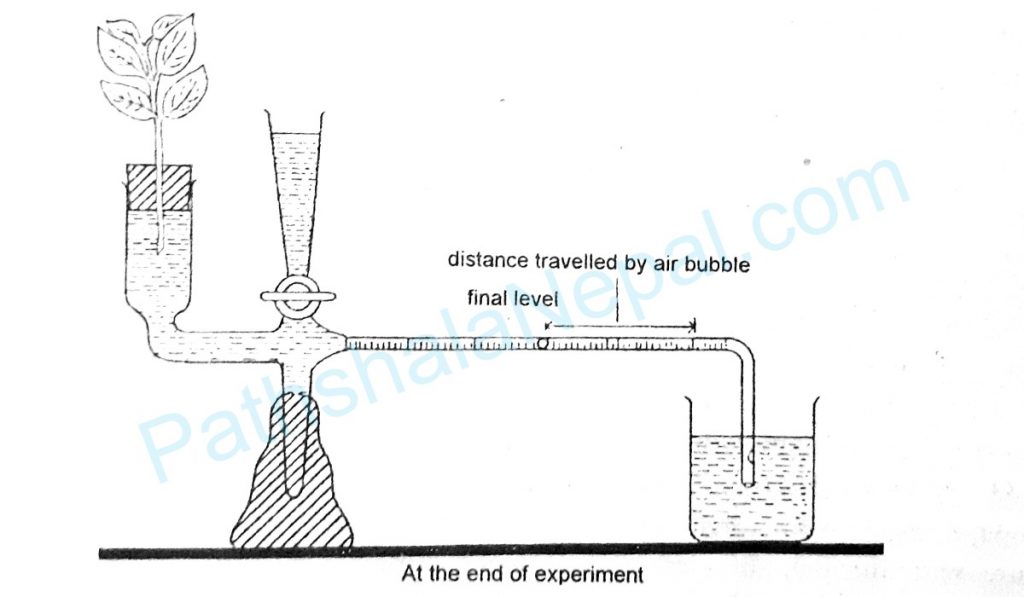Define transpiration, and describe an experiment to show the rate of transpiration by Ganong’s photometer.
1 Answer
Most of the water absorbed is lost through the aerial parts of the plants into air by the process called transpiration. Very little water (less than 2%) is used up in various metabolic activates of plants. Most of the transpiration takes place through leaves known as foliar transpiration.
Types of transpiration
Transpiration may occur through the cuticle, lenticels stomata, and sometimes bark, and is accordingly called Cuticular, stomata, and bark transpiration.
- Cuticular transpiration: it is the loss of water in the vapor from the general surface (leaves and young stems) through the layer of the cuticle. Cuticular transpiration is appreciable only in case the cuticles are then as in entophytic plants growing in humid areas. It continues throughout day and night.
- Stomata transpiration: it is the loss of water on vapor from stomata present on the surface of leaves and to a lesser presence on the surface of leaves and to an extent on the surface of flowers and young stem. It is the major part of transpiration (80-90%) it, however, occurs only when stomata are open.
- Lenticular transpiration: This is the loss of water in vapors from lenticels or aerating pores present in the bark of stems.
- Bark transpiration: A small quantity of water is lost from the corky bark of the stem. Both lenticular and bark transpiration continues day and night time.
Demonstrate the process of water uptake during transpiration by Ganong’s photometer.
Requirements:
Apparatus: Ganong’s photometer, cork with hole, beaker, dropper.
Material: A healthy leafy shoot
Chemical: Vaseline
Theory: most of the water absorbed is lost in the form of vapor through in the aerial parts of the plants into the air by the process called transpiration. Very little water (less than 2%) is used up in various metabolic activities of plants. Most of the transpiration takes place through the leaves known as foliar transpiration. Transpiration may occur through the cuticle, lenticels, stomata, and sometimes bark in some species of plants.
Procedure: Take a Ganong’s photometer. Fill it completely with water through the reservoir. Cut a leafy twig underwater and fix it in the shot chamber with the help of a cork with a hole. Dip the distal end of the tube in a beaker containing water. Apply Vaseline on the edge of the shoot chamber and hole of cork to make the setup airtight. Introduce air bubble through a bent tube with the help of a dropper, note the initial position of the air bubble in the graduated tube. Keep the experimental setup in sunlight for some time.
Observation: The air bubble slowly travels through the horizontal tube of the photometer towards the plants. Mark the point where the air bubbles have finally reached and note the time taken to travel that distance.
Result and conclusion: The water escapes from the leaves of the twig in the form of water vapor During transpiration a suction force is created in the leafy twig. The suction force leads the leafy twig to absorb water from a horizontal tube of the photometer. As a result of which the air bubble moves towards the twig in order to make continuity of water column in the plant.
Precautions:
- The apparatus should be airtight
- The plant twig should cut underwater to avoid blockage in the xylem vessel.
- Only one air bubble should be entered in the capillary tube.


